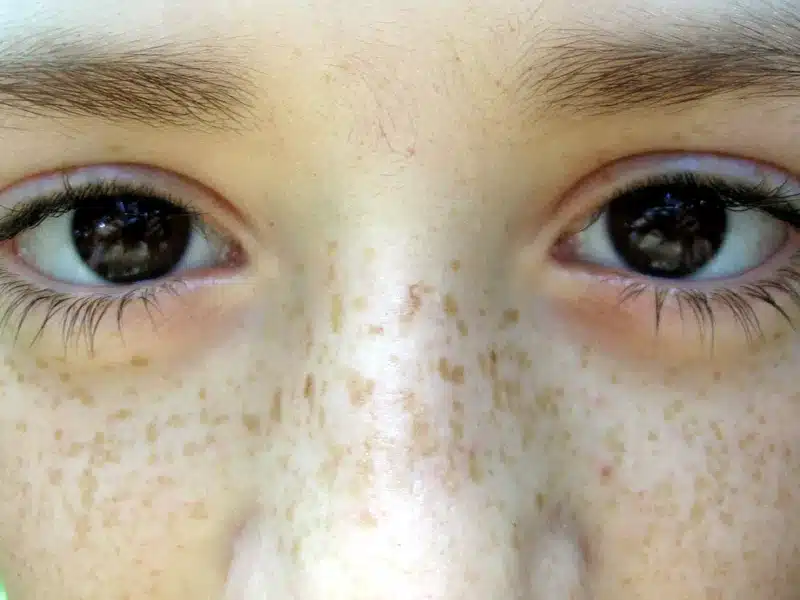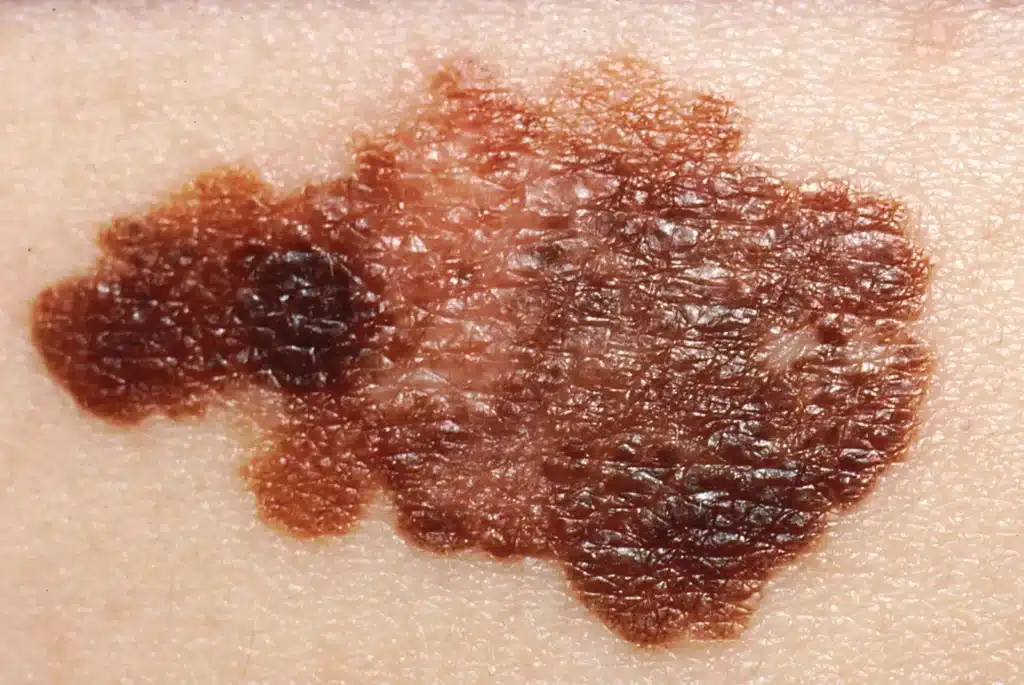Brown spots are a common skin concern, especially in areas regularly exposed to sunlight such as the face, hands, shoulders, and arms. While many of these spots are harmless and related to sun exposure or aging, some can be early signs of skin cancer. Knowing how to tell the difference between freckles, age spots, and potentially cancerous lesions is essential for maintaining skin health and preventing more serious conditions.
1. Freckles (Ephelides)

Freckles are small, flat, and light-to-dark brown in color. They typically develop in people with fair skin and are most noticeable after sun exposure. Freckles are genetic in nature and often become darker in summer and lighter in winter. These spots are harmless and carry no risk of developing into skin cancer.
Key traits of freckles:
- Often appear during childhood or teenage years
- Small size (1–2 mm), flat texture, and uniform tone
- Darken with sun exposure and fade in colder months
- Commonly seen on the face, arms, and upper back
2. Age Spots (Also Known as Liver Spots or Solar Lentigines)

Age spots are flat, pigmented areas caused by long-term sun exposure. These dark patches usually develop in adults over 40 and are most visible on areas like the hands, face, shoulders, and chest. Although harmless and non-cancerous, many people choose to remove them for cosmetic reasons.
Key traits of age spots:
- Typically appear after age 40
- Flat, oval-shaped with defined edges
- Vary in color from light brown to dark gray or black
- Range in size from a few millimeters to over a centimeter
- Frequently treated with laser therapy, chemical peels, or skin-lightening products
3. Skin Cancer (Melanoma and Non-Melanoma Types)

While freckles and age spots are usually harmless, some brown spots may signal the onset of skin cancer, especially melanoma—the most dangerous type. Early detection of melanoma or other skin cancers like basal cell or squamous cell carcinoma can be life-saving.
Watch for the ABCDE rule to detect melanoma:
- Asymmetry: One half doesn’t match the other
- Border: Uneven, ragged, or blurred edges
- Color: A mix of shades—brown, black, red, white, or even blue
- Diameter: Larger than 6 mm (roughly the size of a pencil eraser)
- Evolving: Noticeable changes in size, shape, color, or surface
Other red flags include persistent sores that don’t heal, spots that bleed or itch, or a mole that looks different from surrounding ones (commonly called the “ugly duckling sign”).
4. When You Should See a Dermatologist
Any new, unusual, or changing skin spot should be evaluated by a dermatologist. People with a history of intense sun exposure, tanning bed use, or a family history of skin cancer should schedule annual skin checks. Regular self-exams can also help detect potential skin problems early.
Conclusion
Freckles and age spots are common skin pigmentation issues often resulting from genetics and sun exposure. While they are typically harmless, being proactive about monitoring skin changes is key to early detection of skin cancer. If you’re ever unsure about a spot on your skin, don’t hesitate—consult a dermatologist. Early action could make all the difference.
